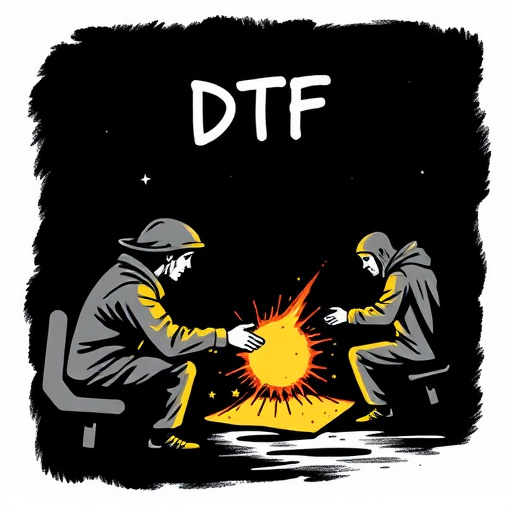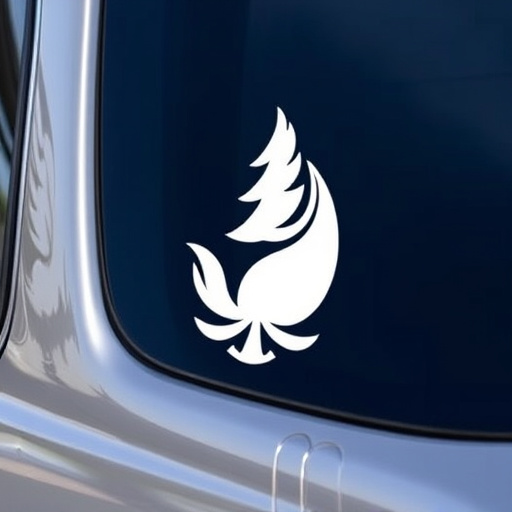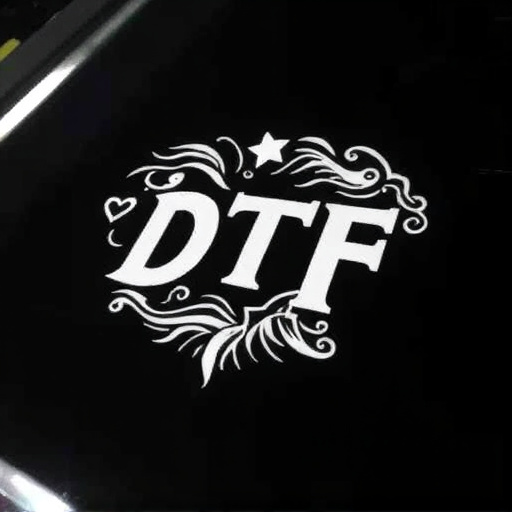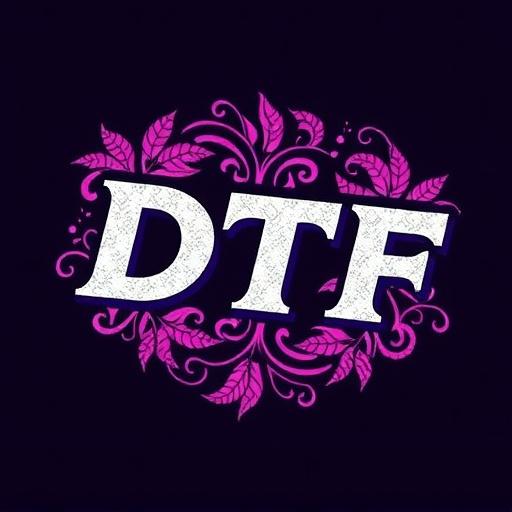Direct-to-film (DTF) transfers have revolutionized apparel decoration by offering a modern alternative to traditional printing methods. This technology enables high-resolution, vibrant prints on various fabrics, making it a popular choice for creating custom t-shirts. DTF transfers provide versatility, on-demand production, and quick turnaround times, appealing to both professionals and DIY enthusiasts. The process involves designing or adapting artwork, printing it onto transparent film, and precisely transferring it to the target fabric using heat activation. Best practices include selecting suitable films, preparing designs digitally, calibrating printer settings, and testing on scrap material to ensure clear and durable transfers. DTF enhances aesthetics and durability with diverse materials and advanced techniques.
Unleash your creativity with Direct-to-Film (DTF) transfers—a game-changer for decorating t-shirts. This innovative technique allows you to transform plain tees into vibrant works of art without the hassle of traditional methods. In this comprehensive guide, we explore the world of DTF, from understanding its unique process to mastering design choices and application techniques. Discover why it’s a favorite among artisans and folks who love self-expression. Let’s dive into the art of crafting stunning DTF transfer t-shirts.
- What Are Direct-to-Film Transfers (DTF)?
- Benefits of Using DTF for T-Shirt Decorating
- The Process of Applying DTF Transfers
- Choosing the Right Images and Designs
- Best Practices for Printing and Heat Pressing
- Popular Materials and Techniques for DTF Transfer T-Shirts
What Are Direct-to-Film Transfers (DTF)?

Direct-to-film transfers, or DTF transfers for short, are a cutting-edge technology that has revolutionized the way we decorate t-shirts and other garments. Unlike traditional printing methods, DTF transfers involve applying ink directly onto a film, which is then heat-pressed onto the fabric. This innovative process allows for stunning, high-resolution prints with vibrant colors and crisp details.
DTF transfers offer several advantages over conventional screen printing or heat transfer methods. They are highly versatile, accommodating various design complexities and allowing for on-demand production, making them a favorite among businesses and individuals looking to create unique, personalized t-shirts quickly and efficiently.
Benefits of Using DTF for T-Shirt Decorating

Direct-to-film (DTF) transfers offer a multitude of benefits for decorating t-shirts, making them a popular choice among designers and hobbyists alike. One of the key advantages is their ability to produce high-quality, long-lasting prints with vibrant colors and crisp details. DTF transfers eliminate the need for intricate screen printing setups, making the process more accessible and cost-effective for small-batch production or personal projects.
Additionally, DTF technology allows for a wide range of design possibilities. It can be used on various fabrics, not just limited to cotton t-shirts, enabling decorators to explore different textures and materials. This versatility, coupled with the ease of use, means that creating custom t-shirts has never been more efficient or affordable.
The Process of Applying DTF Transfers

The process of applying direct-to-film (DTF) transfers to t-shirts involves several precise steps for achieving crisp, high-quality designs. It starts with preparing the artwork, which can be designed digitally using specialized software or adapted from existing graphics. The design is then printed onto a transparent film using a high-resolution printer, ensuring each color layer is perfectly aligned. This film serves as a template for the transfer process.
Next, the t-shirt is laid flat on a heat press machine, and the DTF film is carefully positioned over the desired area. Heat is applied from above, melting the film and transferring the ink onto the shirt’s surface. The heat presses the design securely onto the fabric while ensuring vibrant color reproduction. Once cooled, any excess film is removed, leaving behind a flawless, permanent print. This method offers a versatile way to decorate t-shirts with intricate designs, making it popular among both professional printers and DIY enthusiasts.
Choosing the Right Images and Designs

When selecting images and designs for DTF transfers, consider your target audience and the overall aesthetic you wish to achieve. The right choice can transform a simple t-shirt into a visually appealing piece of wearable art. Opt for high-quality, vibrant graphics that will reproduce well on various fabrics.
Think about the message or theme you want to convey; whether it’s a playful illustration, a quote, or a bold graphic, ensure it aligns with your brand or personal style. Additionally, consider licensing or creating original designs to avoid copyright issues and maintain uniqueness in your final products.
Best Practices for Printing and Heat Pressing

When utilizing direct-to-film (DTF) transfers for shirt decoration, adhering to best practices ensures high-quality results. First, select a suitable DTF transfer film designed for fabric printing. These films come in various types, each optimized for different ink systems and fabric types, so matching the right film to your project is key. Next, prepare your design digitally, ensuring it’s crisp, clear, and at the correct resolution for printing. Using graphic design software allows for precise editing and customizability.
For optimal printing, calibrate your printer settings accurately, paying close attention to ink density and temperature. After printing, carefully apply heat using a press or iron, following the manufacturer’s guidelines for time and temperature. Even heat distribution is essential to prevent ink bleeding or smudging. Consider testing on scrap material first to adjust settings and ensure the design transfers clearly and durably to the shirt.
Popular Materials and Techniques for DTF Transfer T-Shirts

Direct-to-film (DTF) transfers have revolutionized the way we decorate t-shirts, offering a range of materials and techniques that enhance both aesthetics and durability. Popular choices include poly cotton blend fabrics, known for their softness and breathability, making them ideal for everyday wear. The DTF process involves printing on high-quality transfer paper using solvent or UV inks, which are then pressed onto the fabric using specialized equipment, ensuring vibrant colors and intricate designs.
Another prevalent technique is direct-to-garment (DTG) printing, suitable for more complex artwork and larger orders. DTG printers spray ink directly onto the t-shirt, allowing for fine detail and a softer feel compared to traditional heat press methods. This method accommodates various fabric types, including 100% cotton, ensuring a high-quality finish. Additionally, water-based inks are gaining popularity due to their environmental friendliness and ability to produce crisp, vivid prints on both light and dark garments.














